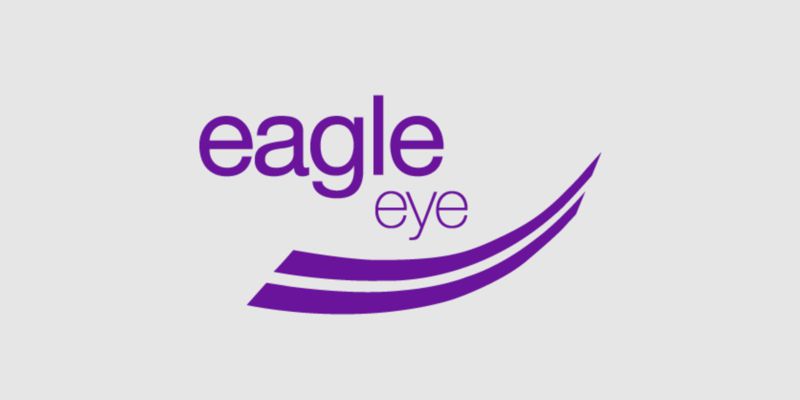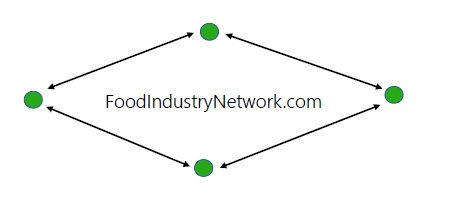How Data-Driven Loyalty Programs Help Grocers and Shoppers Manage New Affordability Challenges

 Joel Percy, Regional Director at Eagle Eye
Joel Percy, Regional Director at Eagle Eye
With grocery prices climbing, shoppers are looking for ways to stretch their budgets. In response, the smartest retailers aren’t just cutting prices—they’re using loyalty programs to drive engagement and revenue. Loyalty programs that focus on delivering value, recognizing individual shoppers’ needs, and maximizing omnichannel engagement are proving to be the most effective way to keep customers coming back in an uncertain environment.
Challenges for Consumers, Challenges for Grocers
After enduring years of fluctuating grocery prices, Canadian and American consumers are facing a new cost of living challenge in the form of tariffs. These economic pressures are creating a perfect storm for household budgets already stretched thin by persistent inflation in food prices. According to Canada’s Food Price Report 2025, food prices will increase by 3% to 5% in 2025 and the average family of four is expected to spend $16,833.67 on food, an increase of up to $801.56 from last year.
Survey data from The Food Industry Association (FMI) revealed that 54% of shoppers said they were extremely or very concerned about increased tariffs on imported foods, up 5% in January. This growing anxiety reflects the real impact these policies have on consumer spending power.
The scope of the challenge is substantial. Data released in February by the Peterson Institute for International Economics showed that the tariffs announced earlier this year—25% levies on most imports from Canada and Mexico combined with a 10% increase in tariffs on products from China and a 10% tariff on Canadian energy imports—would amount to a tax increase of more than $1,200 on the typical U.S. household.
For grocers, these figures (and consumer sentiments) present both a threat and an opportunity. While price-sensitive customers might reduce spending or switch to discount retailers, data-driven loyalty strategies can help maintain shopper relationships through difficult times.
The Role of the Data-Driven Loyalty Program
Loyalty programs are uniquely positioned to provide consumers with access to greater value, which enables grocers to support their customers during critical times. These programs represent a strategic approach to maintaining customer relationships while safeguarding margins in challenging economic conditions.
While grocery loyalty programs have been around for a long time, modern grocery loyalty programs rely heavily on data, personalization, and advanced technology to drive better results. The evolution from simple punch cards to sophisticated digital platforms has fundamentally changed how retailers understand and respond to customer behaviour.
As we detail in our recent eBook, Loyalty Lessons for Grocers, retailers like Loblaw and Tesco have seen significant financial growth through personalized loyalty programs, with Loblaw’s PC Optimum program being cited as one of the factors contributing to a $187 million sales increase in 2024. These programs go beyond traditional discount models by creating personalized offers and promotions that drive both customer satisfaction and retailer profitability.
In-store recruitment strategies, such as staff incentives and exclusive digital offers, are essential for increasing digital loyalty program adoption among customers. Successful retailers invest in optimizing their brick-and-mortar shopping experience, including at checkout, to promote program benefits and ensure smooth digital onboarding.
Personalization Drives Profits
Personalization through loyalty programs, including tailored offers, isn’t just about delivering value to customers and generating goodwill — it also delivers tangible financial results. By analyzing purchase history and preferences, retailers can create targeted promotions that drive incremental sales while maintaining margin integrity.
Boston Consulting Group (BCG) predicts personalization leaders will capture $570 billion in global growth by 2030. This figure represents a massive opportunity for retailers who excel at leveraging customer data for personalized experiences. Loblaw’s success exemplifies this, with financial growth that is at least partially attributable to personalization-led initiatives.
By understanding individual customer preferences and purchase patterns, Loblaw has been able to deliver more relevant offers that drive basket size and purchase frequency.
The most effective loyalty programs create a virtuous cycle: better data leads to more personalized offers, which drive increased engagement and generate more actionable data. This continuous improvement process allows retailers to refine their approach over time, creating an increasingly valuable proposition for both customers and the business.
In an inflationary environment, these programs offer a sophisticated alternative to across-the-board price cuts. Rather than eroding margins with universal discounts, retailers can provide targeted value to their most loyal customers while maintaining overall profitability.
For consumers facing rising prices, loyalty programs offer a way to maximize value without necessarily changing shopping habits. As inflation and tariff concerns continue to shape consumer behaviour, the grocers who will thrive are those who leverage loyalty data not just as a marketing tactic but as a core business strategy that delivers measurable financial results.
About the Author
Joel Percy is an experienced Loyalty and CRM executive with deep expertise in retail personalization and data monetization. At Loblaw Companies in Canada, he helped design, launch and run PC Plus, one of the world’s first fully personalized digital rewards programs. He has also consulted with retailers around the globe on the design of personalized marketing programs. He is currently the Regional Director at Eagle Eye, where he helps clients grow loyalty and drive sales by building digital connections with their customers.
Link to author’s headshot: Eagle Eye – Joel Percy Headshot
Link to authors LinkedIn: https://ca.linkedin.com/in/joel-percy
Source: westerngrocer.com

